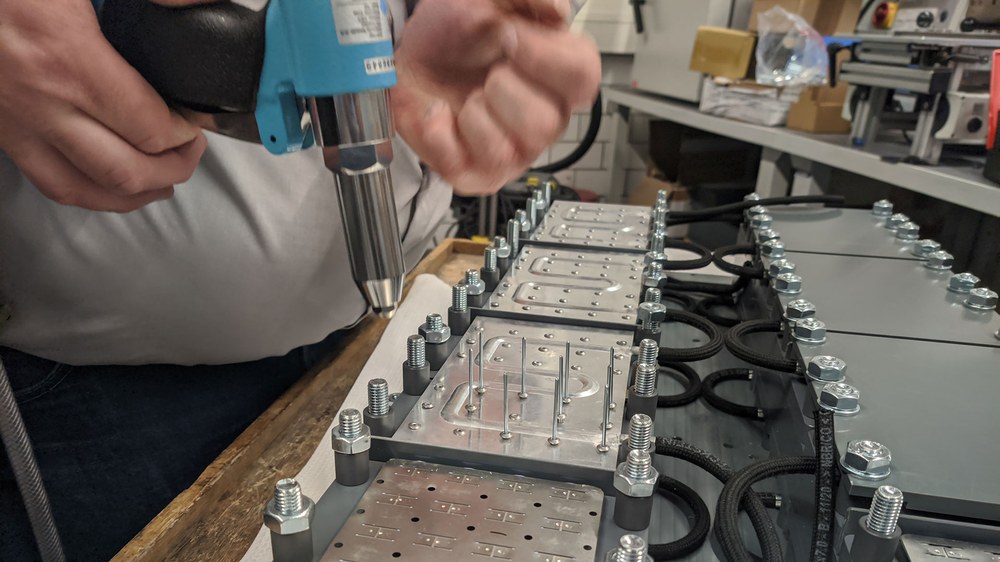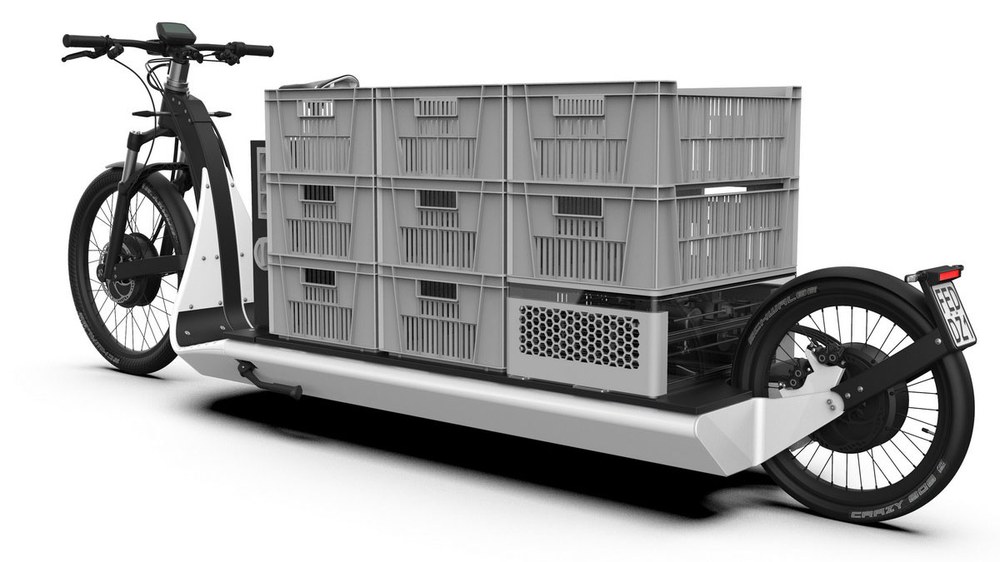The user-friendly vehicle is designed in a long-tail format, which means that the load is positioned between the rider and the rear wheel. "Thanks to the low center of gravity, the cargo bike remains stable even at high speeds, which simplifies handling and increases driving safety at the same time," explains Markus Schmitz, Managing Director of EMB. What makes this electric cargo scooter unique worldwide is the specially developed quick-charging system and the rechargeable battery. "A high-quality battery system with an active heating and cooling system makes it possible to charge the battery to up to 80 percent within 30 minutes at a conventional public AC charging station. This saves a lot of time," says Bastian Mayer, project manager for ZEC-Bike at DLR-FK. Another special feature is the so-called onboard fast charger (OBL). This makes it possible to provide power for consumers via a Schuko socket not only when stationary, but also while driving. For example, it can be used to charge power tool batteries for work equipment or even operate refrigeration units to keep perishable goods fresh.

The electric bike is also equipped with all-wheel drive, which not only increases riding safety but also energy efficiency. The special feature: an electric motor is also installed on the front wheel, where most of the braking energy is generated, which recovers most of the braking energy by means of recuperation, i.e. in generator mode. This means that the battery must be able to handle high charging currents through braking in rapid alternation with discharging processes for propulsion, which can only be achieved through active temperature control. In addition, the all-wheel drive enables the distribution of the drive or braking torque requested by the driver depending on the driving situation. By adapting the distribution, driving stability and therefore safety can be increased.
The haptic feedback on the handlebars provides additional driving safety. The sensors installed on the handlebars record the steering angle and steering torque. Sensors are also used to determine the forces acting on the cargo bike via the load and the rider. The sensor data is then used to derive estimated values for the roll angle, load weight and moment of inertia. "An intelligent algorithm recognizes critical situations from the information on the driving status and converts them into haptic signals. This helps the driver to recognize problematic driving situations and avoid dangerous steering manoeuvres that could cause the vehicle to tip over," explains Buchholz.
In order to accelerate the market launch, the DLR-FK researchers looked for suitable business models and investigated these for the electric cargo bike. As already mentioned, the cargo bike was designed for a payload of up to 100 kilograms. The loading area is adapted to the format of Euro containers (base area 60 x 40 cm). The ZEC-Bike project team sees great potential for use in the courier, express and parcel sector: from commercial delivery services to private load transportation and municipal use. Different financing models for the various target groups were also considered.
The two vehicle demonstrators that have now been completed allow initial realistic testing and evaluation of the developed concepts as a basis for possible further development of the prototype. The technology can now be made available to interested companies via a technology transfer in order to produce such vehicles in series on this basis. The ZEC-Bike report (in german) published at the end of the project is available to all interested parties.

